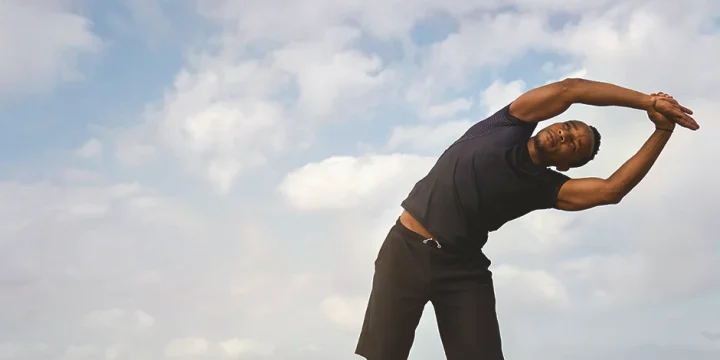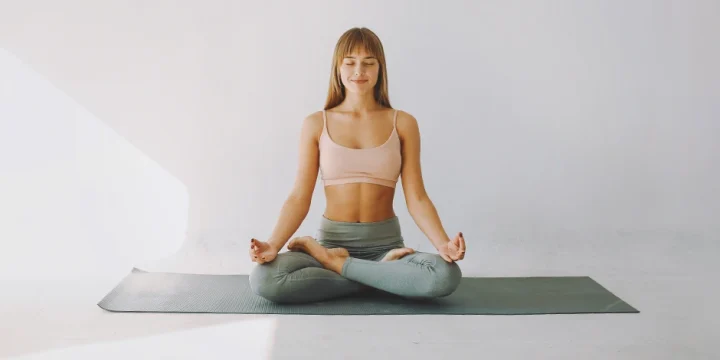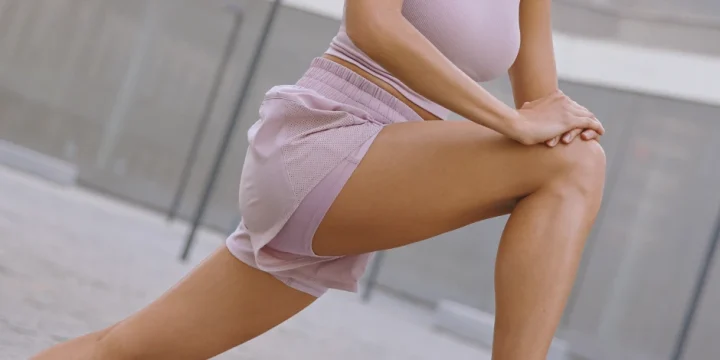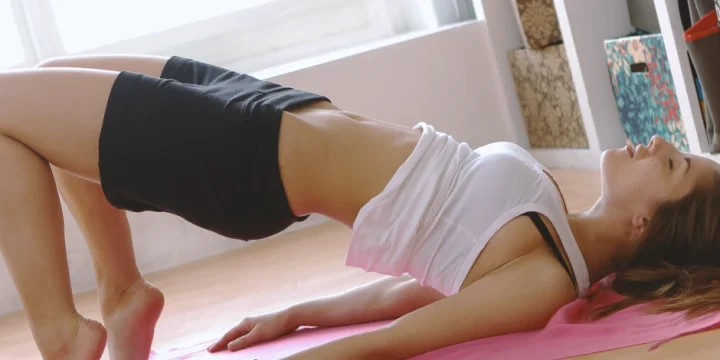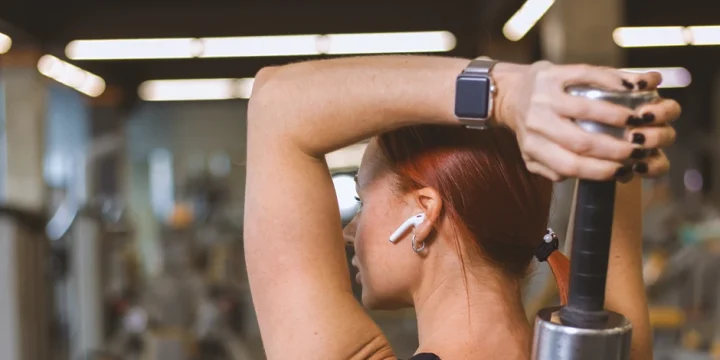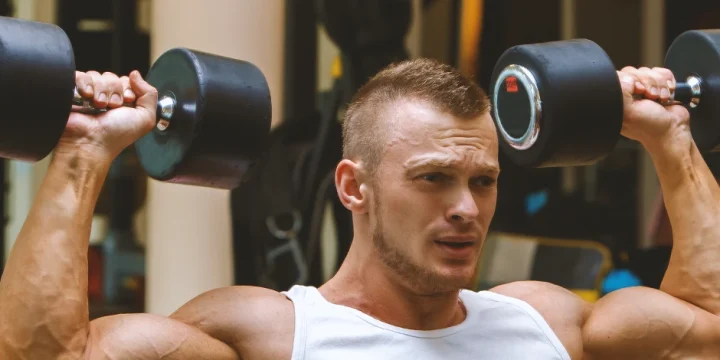The low dragon is a popular yoga pose that can help release tension and increase flexibility.
It is also one of my go-to yoga stretches that I have helped countless fitness clients master to increase their flexibility and mobility.
As a certified personal trainer, I will examine how to do the low dragon, several excellent variations, and the benefits.
Whether experienced or just starting, the low dragon will be a great addition to any routine.
Let’s begin.
Quick Summary
- To effectively perform the low dragon stretch, a yoga pose targeting the hip flexors, groin, and quads begins in a low lunge position and transition into various poses to deepen the stretch.
- The article details eight variations of the low dragon stretch, including dragons flying high and winged dragons, to cater to different flexibility levels and target areas.
- According to the National Center for Biotechnology Information, static stretching, like the low dragon stretch, is most effective at increasing range of motion (ROM) within 15 to 30 seconds, with no significant increase in muscle elongation after 2 to 4 repetitions.
- The low dragon stretch is a crucial element in yoga for enhancing hip flexibility and reducing tension, making it a valuable addition to any fitness or wellness routine.
What Is the Low Dragon?

The low dragon, or dragon flying low, is a stretch frequently seen in yoga practice that targets the hip flexors and quads.
In the Low Dragon Stretch yoga variation, you start with the baby dragon pose, keeping your hip flexors engaged while lowering the back knee and extending the front knee to achieve the dragon flying low position.
In my years of coaching yoga, I've seen the low dragon stretch significantly relieve sciatic pain and tension in the legs and hips for many of my clients. This pose has been a game-changer for those struggling with lower body discomfort.
This pose can be hard on the ankle and knee, particularly for knee pain or injury sufferers. Placing a towel or pad under the kneecap can make the pose more comfortable without taking away from the stretch. We will look at how to adjust the pose for the many variations shortly.
How to Do This Stretch
This is a step-by-step guide:
- Begin in a low lunge position with your right foot forward and your left leg extended behind you.
- Slowly lower your left knee to the ground, keeping your right knee above your ankle.
- Shift your weight back slightly and straighten your right leg, feeling a stretch in the front of your left hip and thigh.
- Place both forearms on the ground inside of your right foot for support.
- Hold for 30 seconds or longer as long as it’s comfortable.
- Return to start by coming up onto your palms and moving your back knee forward. Bring your front leg back so you are in the tabletop position (on all fours).
- Complete the movement on the opposite side, holding for the same amount of time.
Low Dragon Stretch Benefits
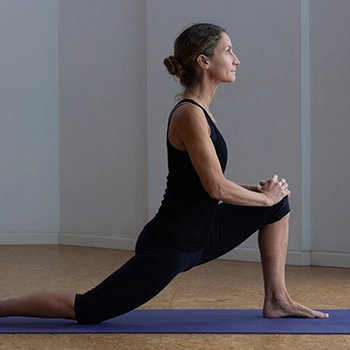
The primary benefit of the low dragon is that it is a deep stretch that gets right into the hip joint.
According to the Yoga Journal website, opening up the hips improves the range of motion and circulation, decreases back pain, and enhances overall mobility, particularly for lower body movements [1].
In my yoga sessions, I've found that performing the downward dog and child’s pose before switching sides in the dragon pose greatly enhances tension relief and flexibility. This sequence has been effective for my students in achieving deeper relaxation and improved range of motion.
According to one of the studies from the National Center for Biotechnology Information website, stretching performed as part of a warm-up prior to exercise is thought to reduce passive stiffness and increase the range of movement during exercise [2].
“The very interesting thing is that we often find that low back pain is intimately related with hip dysfunction. This occurs when the back is making up for the loss of the hip’s full capabilities.”
- Chad Adams, DC, The Cleveland Clinic
Low Dragon Variations

Adjust the low dragon in the following ways to add challenge and work in different areas.
1. Dragon Pose
Also called the baby dragon, to perform this variation, instead of resting on your forearms, support yourself with both hands placed inside your front foot.
The position of your back knee remains the same as the low dragon, and you can place your hands on a yoga block instead of the mat.
2. Dragon Flying High
Set your hands on your front thigh.
Lift your chest, creating a slight backbend and increased weight over your hips.
3. Twisted Dragon
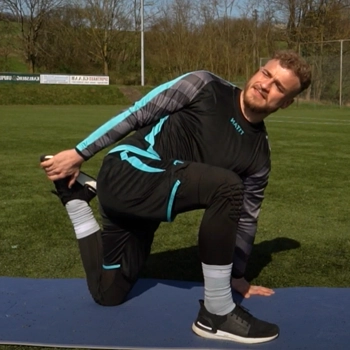
Firmly flex the front foot. Push your front knee outward with your hand, and rotate the chest towards the front knee.
4. Winged Dragon
Flex your front foot and open your knee to the side.
Roll on the outside edge of your front foot. Walk your hands forward or rest your elbows down on the mat or blocks if needed.
5. Overstepping Dragon
Bring your front knee forward until the heel almost lifts off the mat.
Position your back knee the same as the low dragon.
Your hands should be on either side of the front foot, supporting most of your weight.
You’ll feel a nice stretch in the Achilles tendon.
6. Dragon Splits
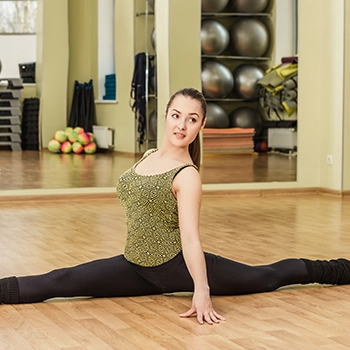
Walk your back leg further down the mat to bring both legs straight.
Place a bolster or blocks under the front hip for support.
Keep your torso up or fold over the front leg to experience different sensations.
7. Dragon at the Wall
Place one knee on a cushion against a wall; the arch of your foot should be against the wall.
Step forward with the opposite foot and sink your hips.
Set a yoga block vertically to support your front thigh and bent knee.
Lift your upper body.
8. Fire Breathing Dragon
Any of the above variations with your back toes tucked under and your back knee lifted.
This position lengthens the back leg and puts more weight on the hips, increasing the stretch.
FAQs
What Does the Low Dragon Stretch?
The low dragon stretches the hips and groin muscles, increasing hip mobility and reducing tightness in the quads caused by prolonged sitting or physical activity.
During the Low Dragon Stretch, yoga practitioners focus on their front foot placement and maintain a deep hip stretch by targeting the front thigh and hip joints.
What Is Dragon Pose Good For?
The dragon pose is good for reducing tension in the hip flexors, quads, and glutes. Tightness in these muscles can limit range of motion and lead to further injury. Relieving tension can increase mobility and decrease injury risk.
How Does the Low Dragon Stretch Integrate with Yoga Practices?
The low dragon stretch integrates with yoga practices by enhancing flexibility and balance, often used in sequences to prepare for or recover from more intense poses. Its role in yoga is to improve hip and groin flexibility, making it a valuable addition to yoga routines.
What Specific Muscle Groups Are Targeted by the Low Dragon Stretch?
Specific muscle groups targeted by the low dragon stretch include the hip flexors, quadriceps, and groin muscles. This stretch effectively loosens these areas, aiding in overall lower body flexibility and mobility.
What Variations of the Low Dragon Stretch Are Suitable for Different Flexibility Levels?
Variations of the low dragon stretch suitable for different flexibility levels range from modified poses for beginners to more advanced versions for experienced individuals. These variations ensure that everyone, regardless of their flexibility, can benefit from this stretch.
How Does the Low Dragon Stretch Compare with Similar Stretches?
The low dragon stretch compares with similar stretches by offering unique benefits in targeting the hip flexors and quadriceps more intensely. It stands out for its ability to open the hips deeply and improve lower body flexibility.
How Can the Low Dragon Stretch Be Incorporated into Daily Routines?
The low dragon stretch can be incorporated into daily routines by including it in morning stretches or as a break during long periods of sitting. Its versatility makes it an excellent choice for daily flexibility and mobility enhancement.
Reference:
- https://www.yogajournal.com/poses/anatomy/hips/qa-hip-openers-good/
- https://www.ncbi.nlm.nih.gov/pmc/articles/PMC3273886/
About The Author
You May Also Like
